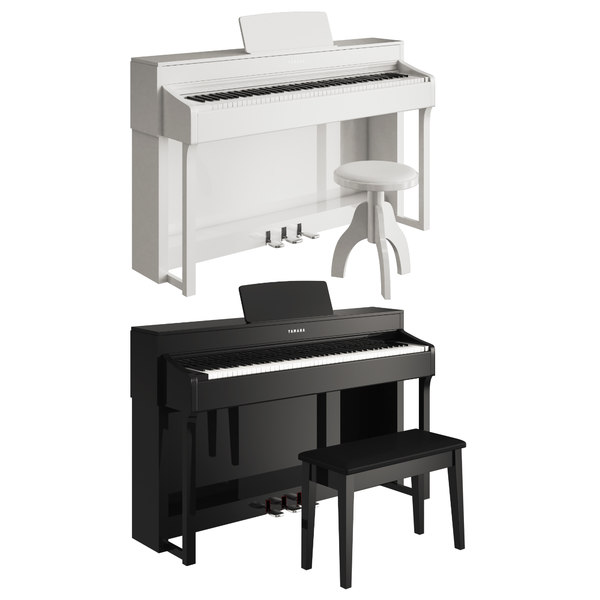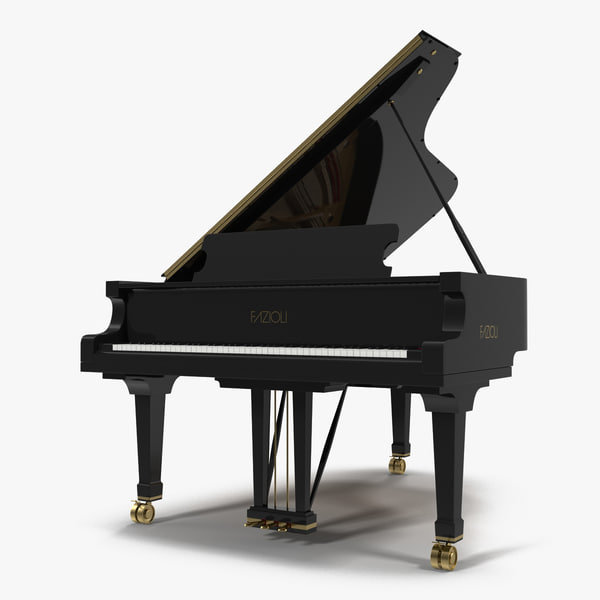 We assume that, for a given vibratory level of the soundboard, the distortion ratio is identical, not less than so as of magnitude, whether or not the piano is excited acoustically or mechanically. On this paper, we suggest a unified neural community structure where individual neural networks for each state and the temporal order modeling are built-in inside a single neural network. As prediction and creation are two broadly completely different endeavours, we focus on the potential biases in evaluating temporal generative models by means of prediction duties and their impression on a artistic system. Temporal variations of the sounds in different devices. Expressive variations of tempo and dynamics are an necessary facet of music performances, involving a wide range of underlying components. CNNs, which have been educated for music tagging in the supply task. In our source job, a convolutional neural network (denoted by convnet hereafter) is educated for distinguishing synthesised music excerpts with or without the sustain-pedal effect. The regressor/classifier head of the mannequin tries to predict the source labels while the discriminator head predicts the domain for each data level in the batch. Mathematically the mannequin is described as follows. The remainder of this paper is organised as follows. Using the outlined efficiency criterion we chosen the most efficient model and implemented it in a system known as Live Orchestral Piano (LOP), an interface for real-time orchestration from a piano input.
We assume that, for a given vibratory level of the soundboard, the distortion ratio is identical, not less than so as of magnitude, whether or not the piano is excited acoustically or mechanically. On this paper, we suggest a unified neural community structure where individual neural networks for each state and the temporal order modeling are built-in inside a single neural network. As prediction and creation are two broadly completely different endeavours, we focus on the potential biases in evaluating temporal generative models by means of prediction duties and their impression on a artistic system. Temporal variations of the sounds in different devices. Expressive variations of tempo and dynamics are an necessary facet of music performances, involving a wide range of underlying components. CNNs, which have been educated for music tagging in the supply task. In our source job, a convolutional neural network (denoted by convnet hereafter) is educated for distinguishing synthesised music excerpts with or without the sustain-pedal effect. The regressor/classifier head of the mannequin tries to predict the source labels while the discriminator head predicts the domain for each data level in the batch. Mathematically the mannequin is described as follows. The remainder of this paper is organised as follows. Using the outlined efficiency criterion we chosen the most efficient model and implemented it in a system known as Live Orchestral Piano (LOP), an interface for real-time orchestration from a piano input.
During each installment of the competitors, virtuoso pianists carry out on Yamaha Disklaviers which, along with being concert-high quality acoustic grand pianos, utilize an built-in high-precision MIDI capture and playback system. We suggest an end-to-finish structure for jointly training each the acoustic and the language fashions for an AMT job. Four fashions are evaluated on the orchestral inference process. Anatomic inference from MRI. 2, the baselines endure from extreme local inference noise, whereas the method using our PIANO mannequin offers extra full results, considerably improving the performance of positive-grained bone segmentation. From the cross-validation results, the proposed transfer studying method achieves a mean F-measure of 0.89 and an total efficiency of 0.Eighty four obtained utilizing the micro-averaged F-measure. After registration, we get hold of per-bone aligned meshes with global constant topology for the next mannequin parameter studying process. Global structural info to perform per-bone non-rigid alignment at a finer scale. Fig. 4 shows the intermediate alignment results. Generalization. The blue curve in Fig. 6 illustrates the generalization of our mannequin. The 88-observe model with chroma onset worked best. FLOATSUPERSCRIPT is now within the type of units of tuples indicating the onset time, offset time, midi note quantity, and half quantity (i.e. midi monitor quantity) of each occasion in the unique midi file.
 For example, one usually can not categorical in NMF that a sure spectral template for the maintain part of a note is anticipated after a sure time after the assault. We're using industrial recordings of a large a part of the items contained in our database. Note that as a result of automatic course of the database can be quite noisy, as some of the items may be incomplete (e.g. only a single movement of a piece), represented by more than the precise piece (if e.g. the efficiency downloaded for the piece also incorporates other items, like a recording of a full live performance), or the representation is wrong (if the highest results of the online crawler is definitely a performance of another piece). Furthermore, we demonstrated that our mannequin enables more anatomically exact personalized rigging and tremendous-grained hand bone segmentation from an MRI scan or even a single RGB picture in a knowledge-pushed fashion. Given the complexity of the distribution we want to mannequin and the extremely slender measurement of the database, we depend on a Leave-One-Out (LOO) evaluation where seventy five scores are used to practice the model and one is kept for testing.
For example, one usually can not categorical in NMF that a sure spectral template for the maintain part of a note is anticipated after a sure time after the assault. We're using industrial recordings of a large a part of the items contained in our database. Note that as a result of automatic course of the database can be quite noisy, as some of the items may be incomplete (e.g. only a single movement of a piece), represented by more than the precise piece (if e.g. the efficiency downloaded for the piece also incorporates other items, like a recording of a full live performance), or the representation is wrong (if the highest results of the online crawler is definitely a performance of another piece). Furthermore, we demonstrated that our mannequin enables more anatomically exact personalized rigging and tremendous-grained hand bone segmentation from an MRI scan or even a single RGB picture in a knowledge-pushed fashion. Given the complexity of the distribution we want to mannequin and the extremely slender measurement of the database, we depend on a Leave-One-Out (LOO) evaluation where seventy five scores are used to practice the model and one is kept for testing.
We practice this network on our coaching set, which accommodates annotation of 3D joints and high-quality-grained bone mask. To account for the mismatch of joint positions, we add an extra linear layer to map from our joint to the dataset joint annotation. Considering that sustain pedal affects the note transition, we also add re-onset, the second that a new be aware is played whereas the previously performed note on the same key is being sustained with the pedal. Above 1111 kHz111Note that this value is identical in Wogram’s measurements., the mobility becomes all of a sudden a lot bigger. To test whether the outcomes stemming from this evaluation are really related for larger-variance, lower-bias mannequin courses, we run the identical set of experiments again, employing a multi layer perceptron with precisely one hidden layer, colloquially known as a shallow internet. The intuition is that for a query extracted from the same set of candidate performances (that truly matches the piece), the fingerprinter will probably return three kinds of results. MRI joint estimation. Report the results in Tab.












0 komentar:
Posting Komentar